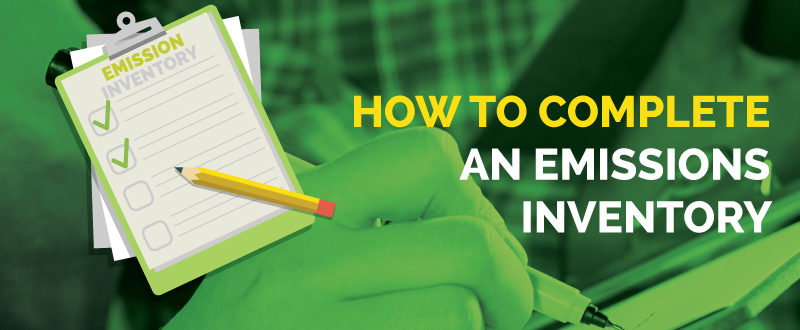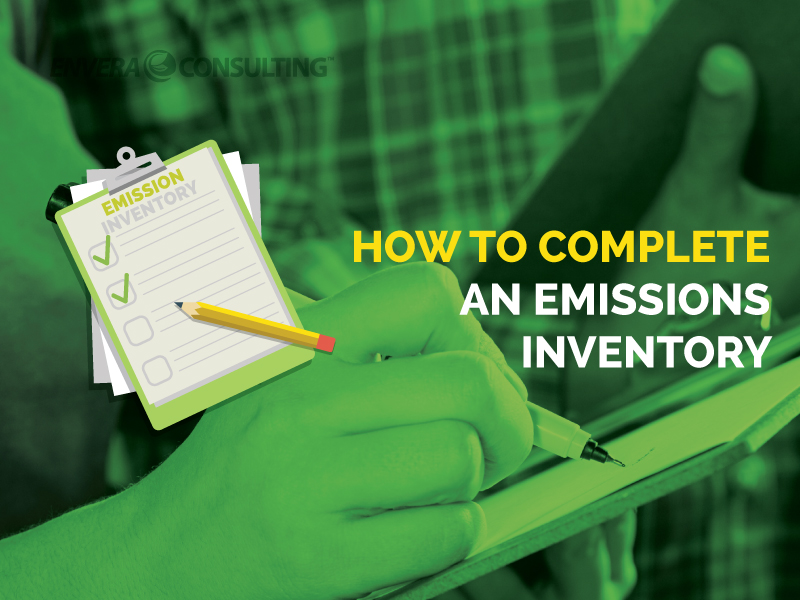

Simply put, an emissions inventory is a common tool in air quality management and compliance that identifies and quantifies the types of air pollutants discharged into the atmosphere from a given operation or a given area over a certain time span.
While there are many uses for an emission inventory, the most common way to use these reports is for regulatory reporting, such as in an annual emission report. Here in Southern California, most industrial facilities need to complete what’s called an Annual Emissions Report (AER), where you need to pay a fee to the Southern California Air Quality Management District (AQMD) based on the level of air pollutants emitted from your facility.
Other uses of emissions inventories include the use of the data as an input into an air dispersion model, which is a simulation of how pollutants are released into the atmosphere and, ultimately, how that will affect local air quality. (The most common air dispersion model is called AERMOD.) When you load an emissions inventory into an air dispersion model, the inventory will only serve as a component of the overall data. Other required pieces of information include area topography and meteorological data such as wind patterns.
Facilities themselves may use the emissions inventory for internal purposes as well. Not only should a facility want to know about their emissions, but the data may also be given to shareholders or senior management so that there is transparency in the facility’s environmental impact.
The Emissions Inventory Process
As with any project, you should define an objective before you begin your emissions inventory. Ask yourself why you are conducting the inventory. Common reasons include:
- For a regulatory report. If so, you’ll also need to understand the various requirements needed to submit this report to the regulatory agency.
- For outreach. Transparency has become increasingly important for a company’s reputation, so you may want to share this with the local community or your entire customer base, to show they you’re complying with regulations and doing your best not to harm the environment.
- For internal purposes. An emissions report may help you develop strategy on how the company wants to proceed or simply to provide a report card of sorts (i.e., “We’ve reduced our emissions 30 percent in one year!”).
Once you know why you’re embarking on this project, you should be able to determine the following:
- The types of emissions you’ll be quantifying. For example, you may choose to measure greenhouse gas emissions, criteria pollutants, air toxins, or specific pollutants, such as hexavalent chromium.
- The types of equipment that you’ll be estimating emissions from. Emissions will be the direct result from the operation of equipment or processes in your boundary.
- The geographic boundary to be measured. Depending on the project objective, it may be a geographical area or it may be a boundary of operational control within a facility.
- The timeframe. Annual Emission Reports require emissions inventories to be performed every year, but your project’s objective may necessitate a different timeframe.
Once you have those four pieces of info — types of equipment, area, timeframe, and types of emissions — you’re ready to begin the actual emissions inventory, which entails calculating all the emissions from all the pieces of equipment in the geographical area that may have operated during the objective timeframe. That may sound simple enough, but depending on the amount and type of equipment, this can take some time, depending on the types of data you have, so be prepared.
After you’ve calculated your emissions from each piece of equipment, the next step is to sum up all the emissions according to the pollutant you’re interested in. For example, if you’re doing a greenhouse gas emissions inventory, you’ll want to sum the emissions of carbon dioxide, methane, and nitrous oxide from all the different pieces of equipment (boilers, engines, etc.) in your inventory.
This will give you a grand total for your facility which, in most cases, will be the number(s) that you’ll be most interested in.
Need help conducting an emissions inventory? Contact us and we’ll guide you through the process.